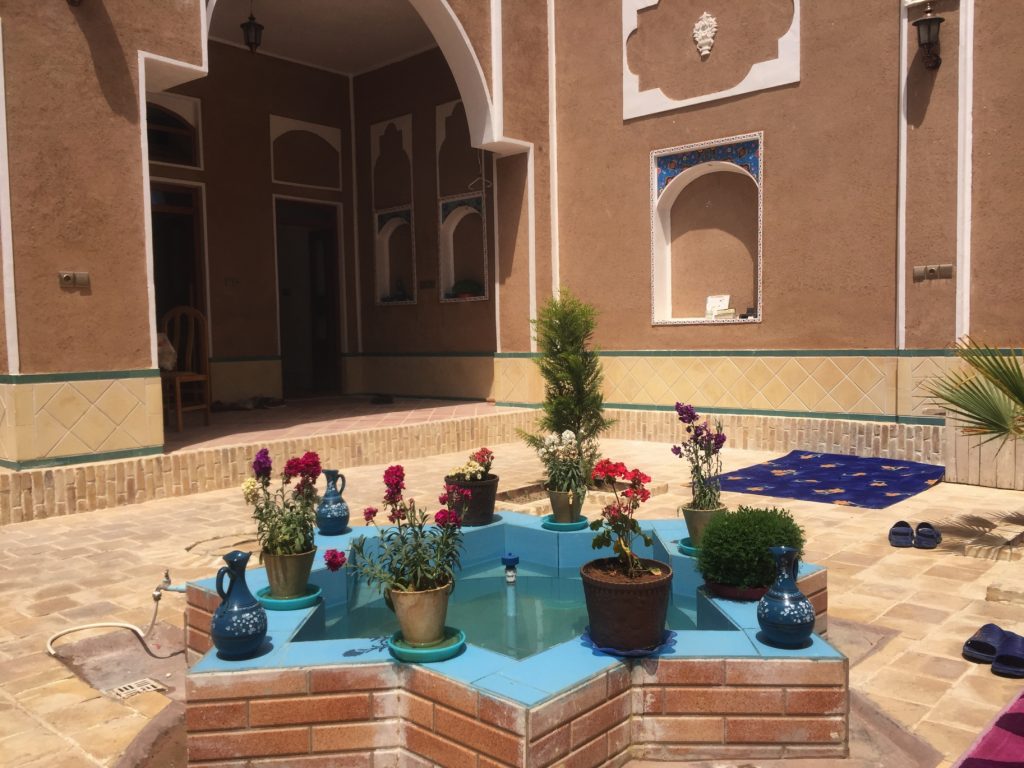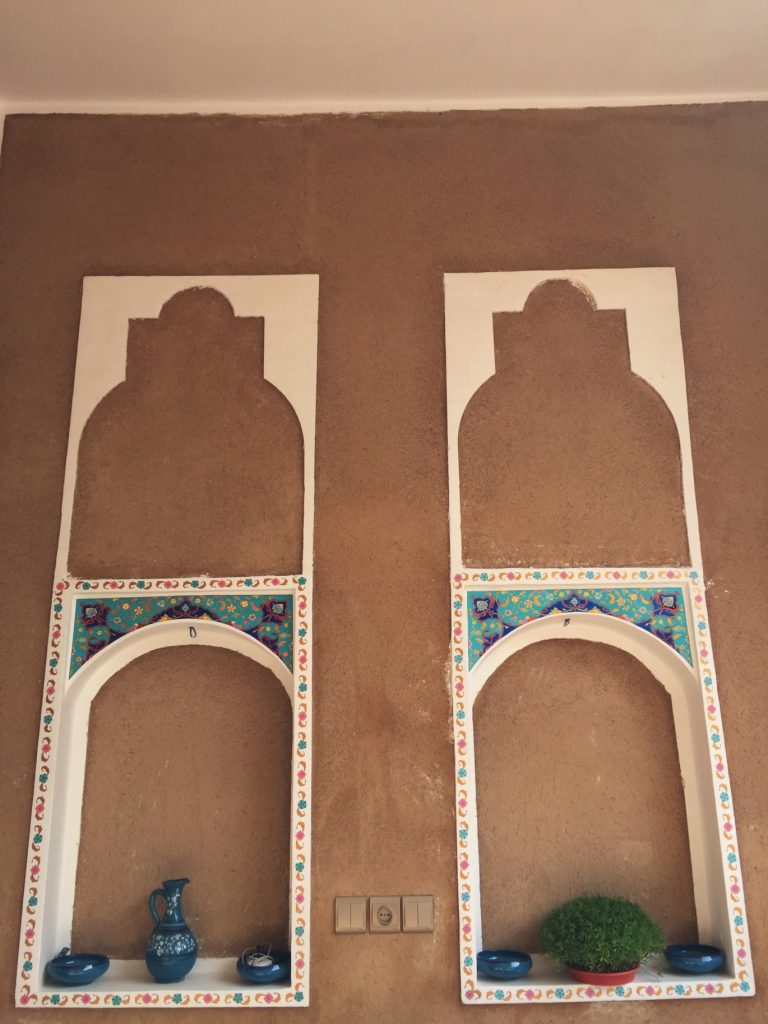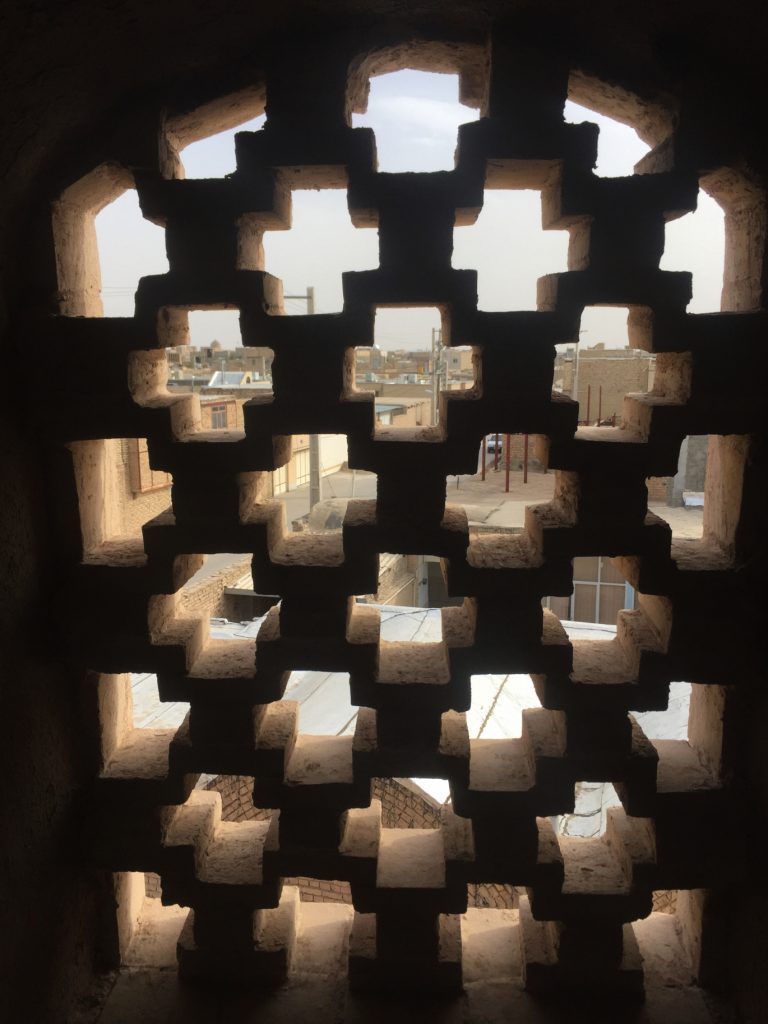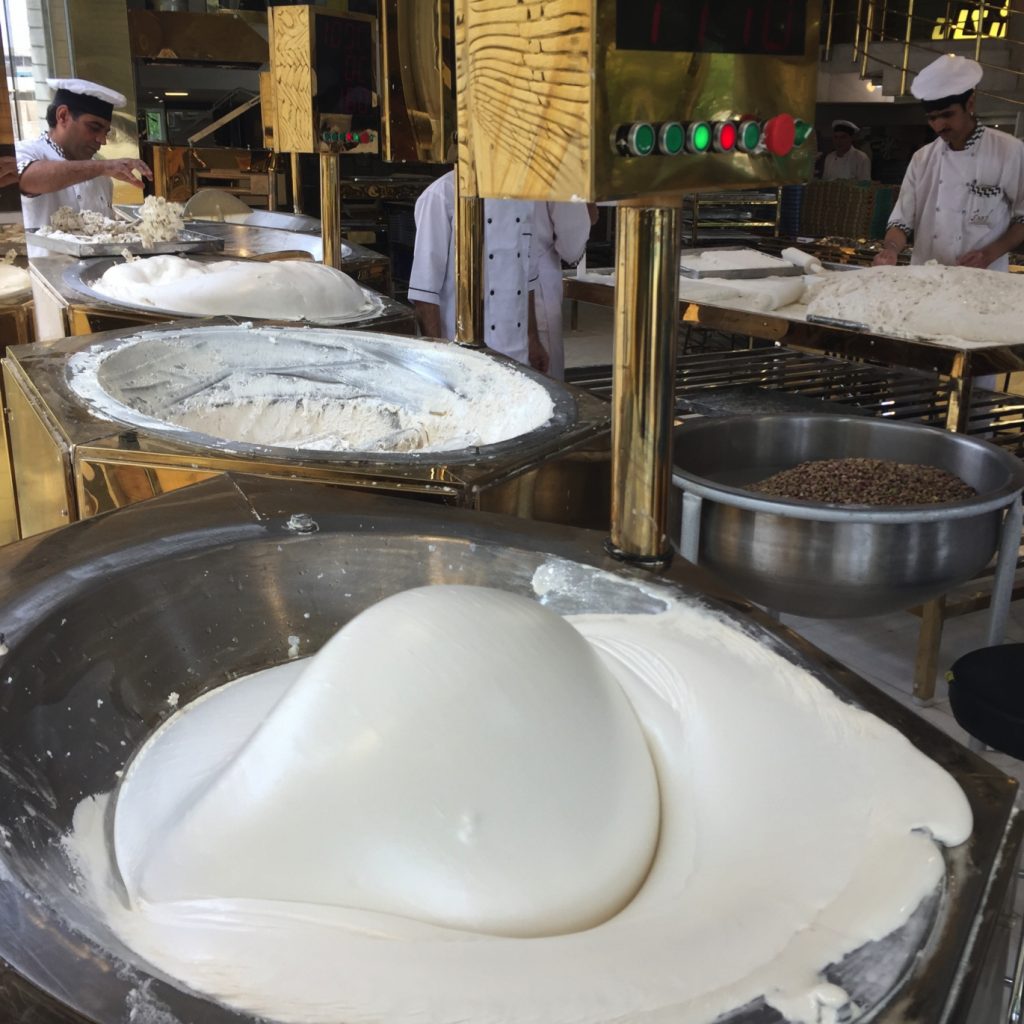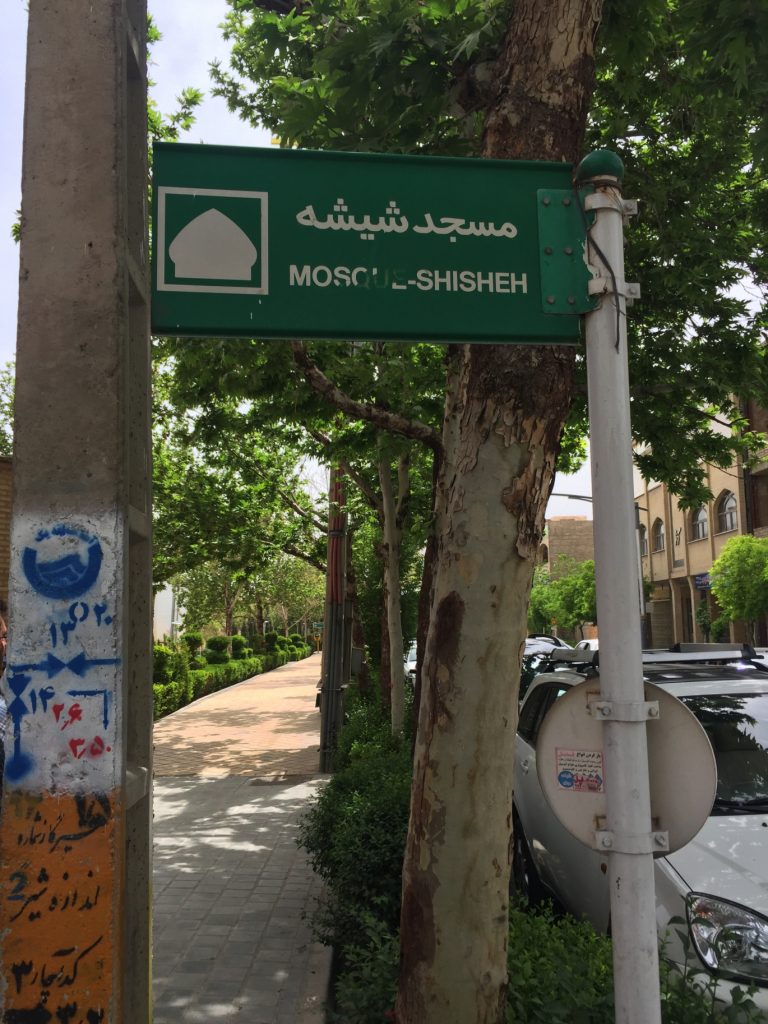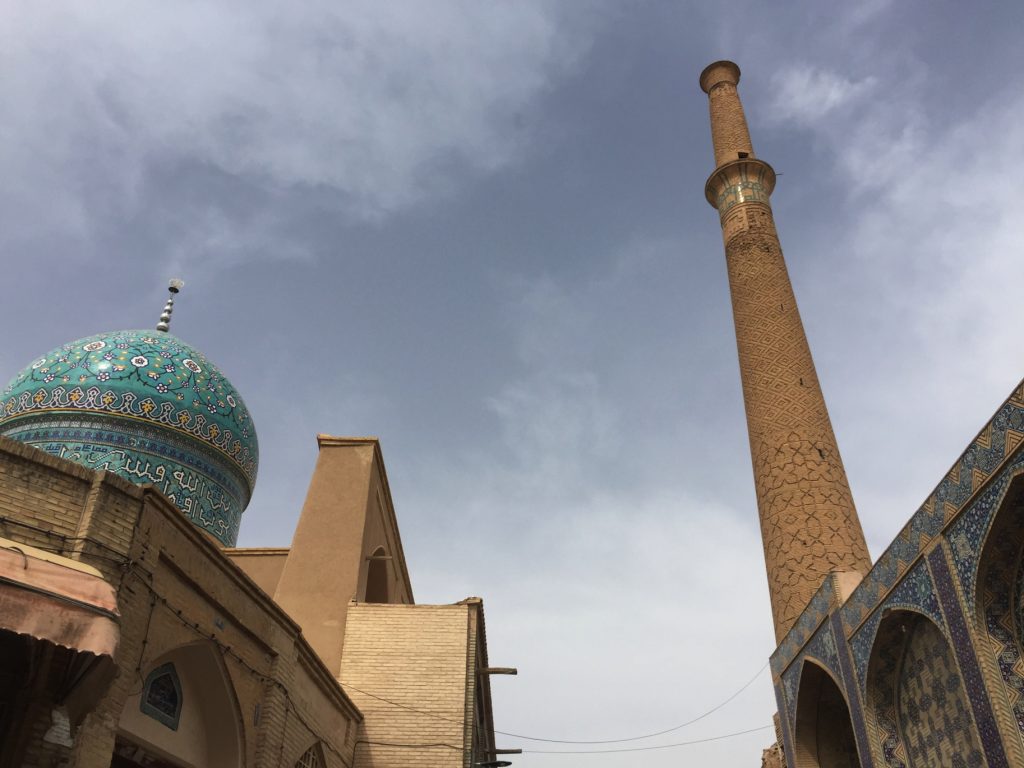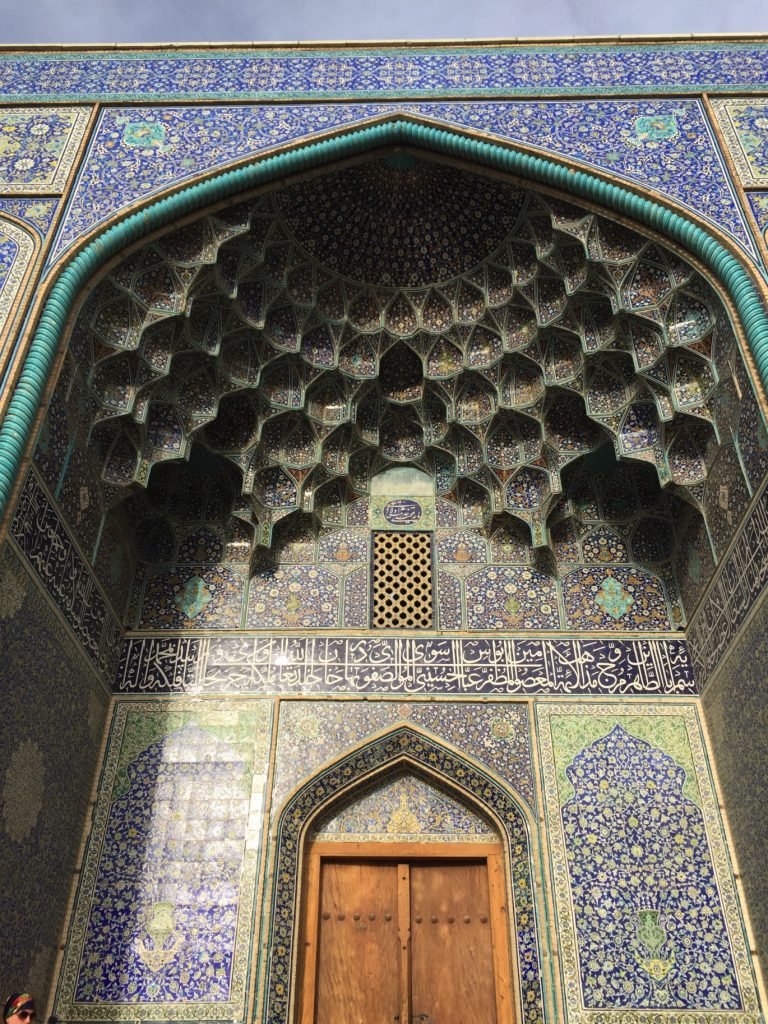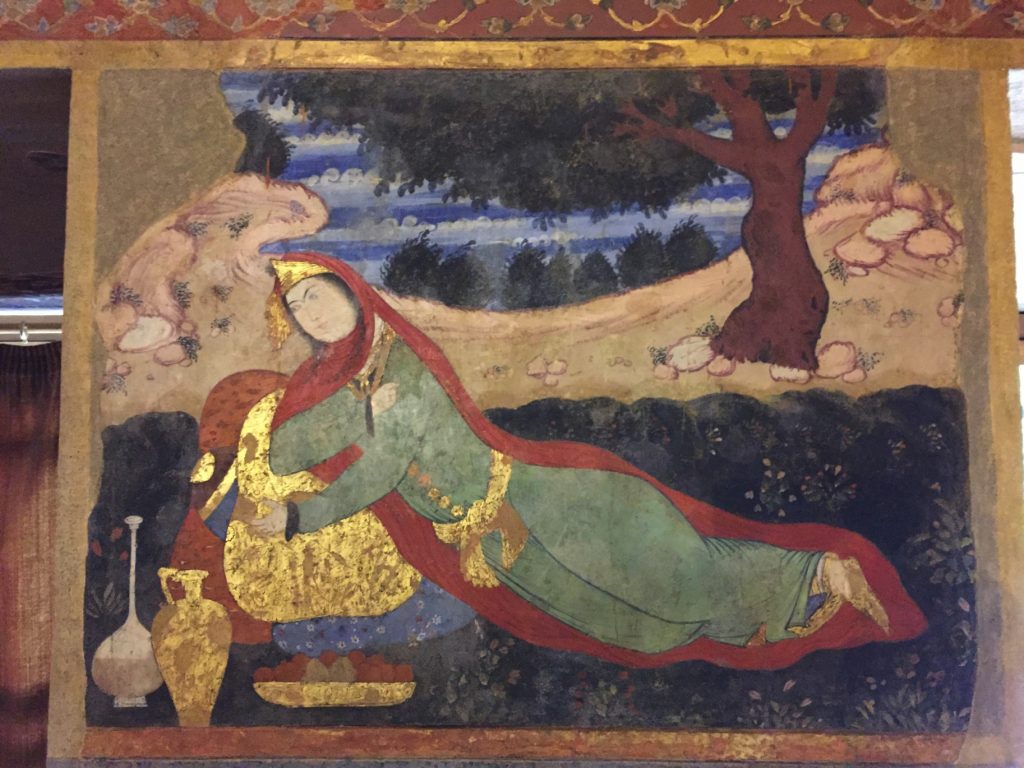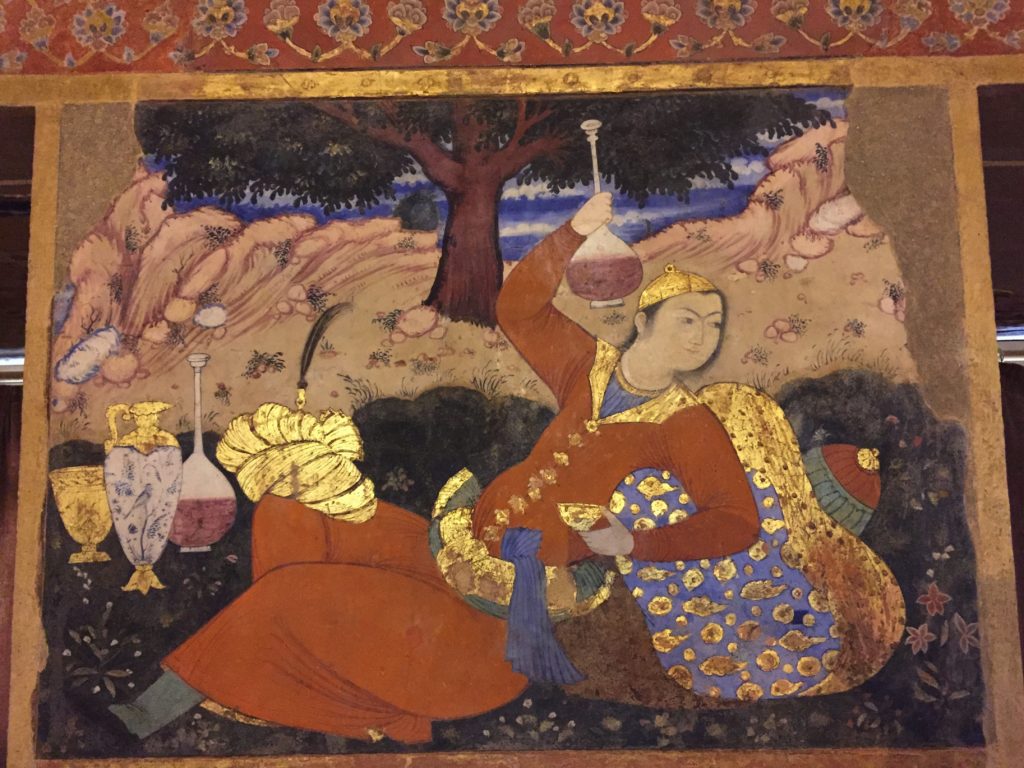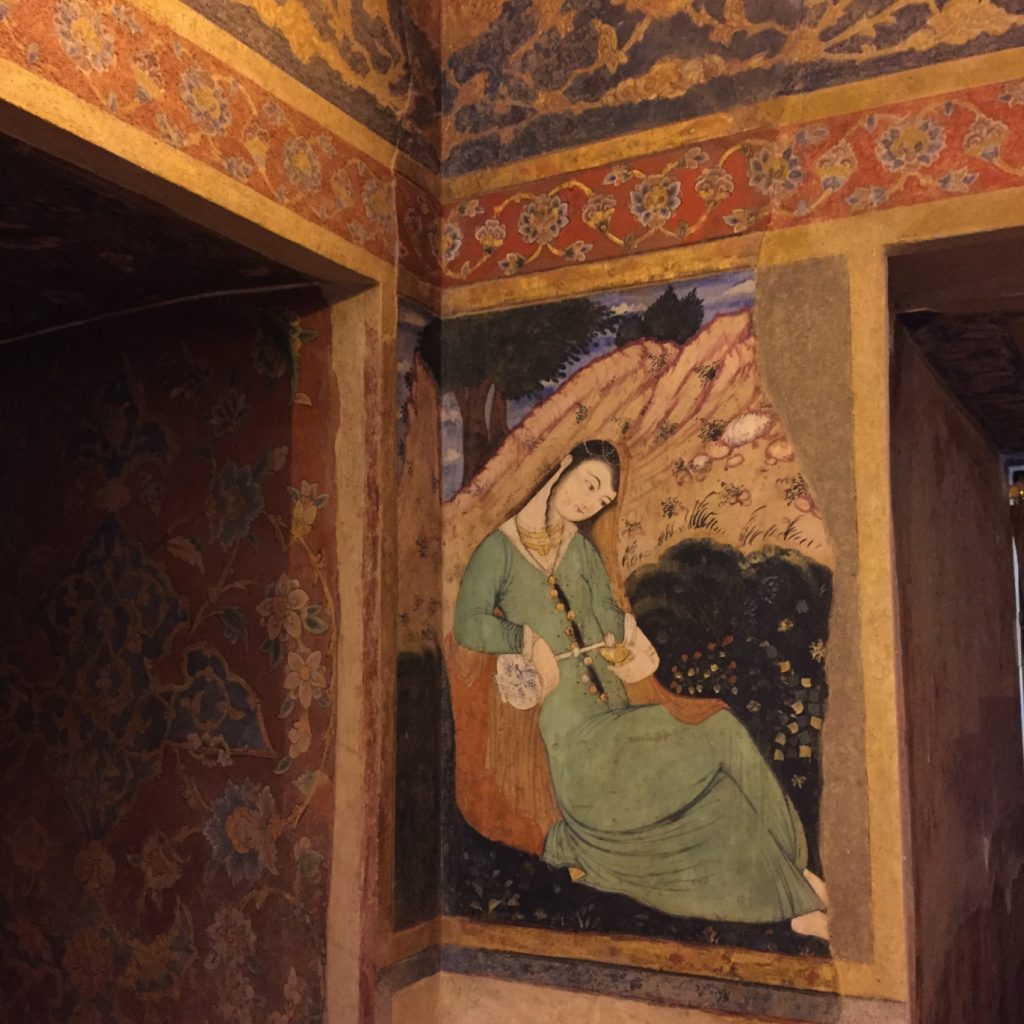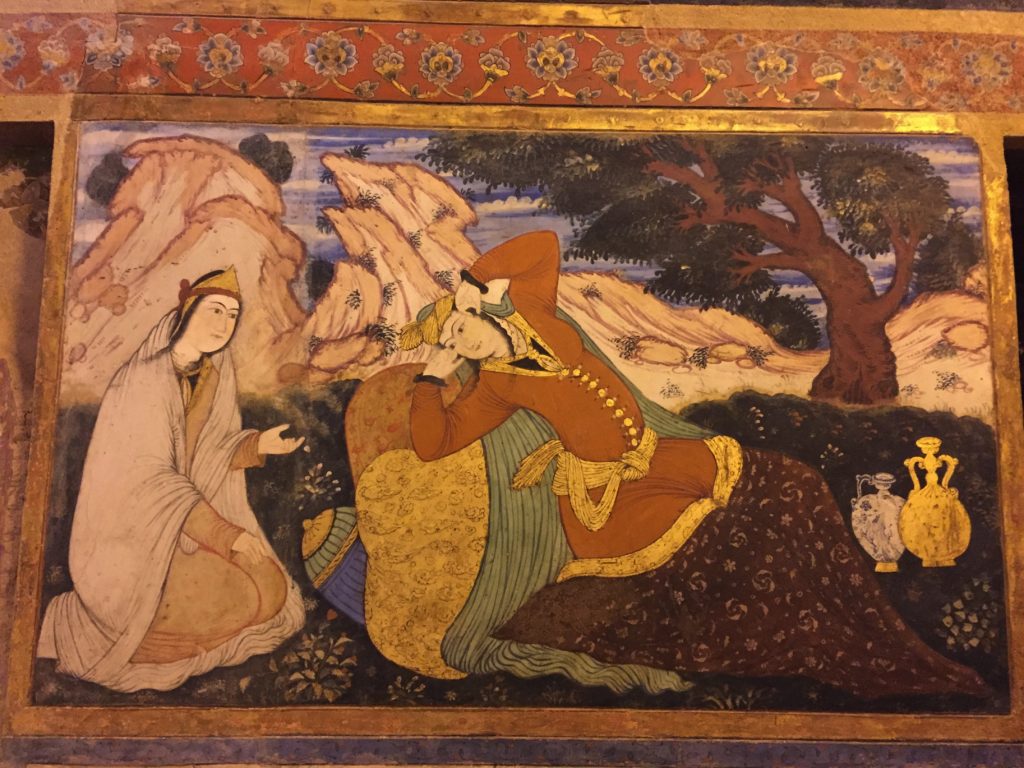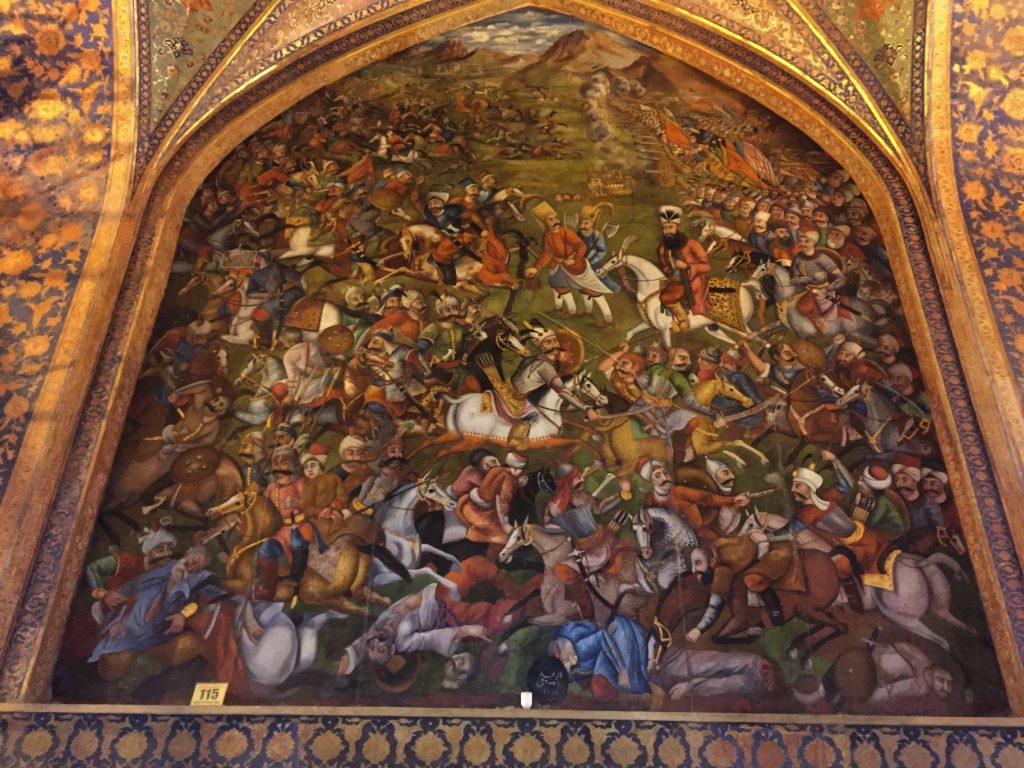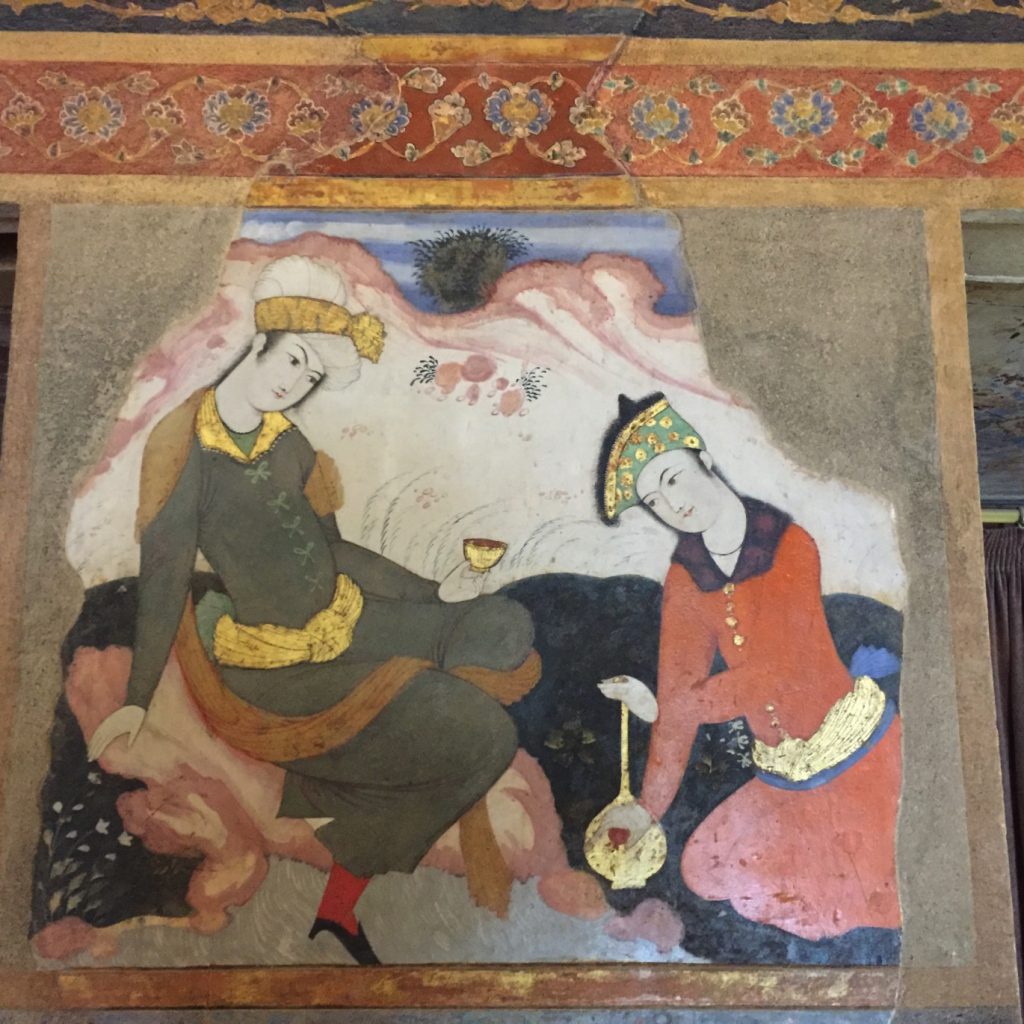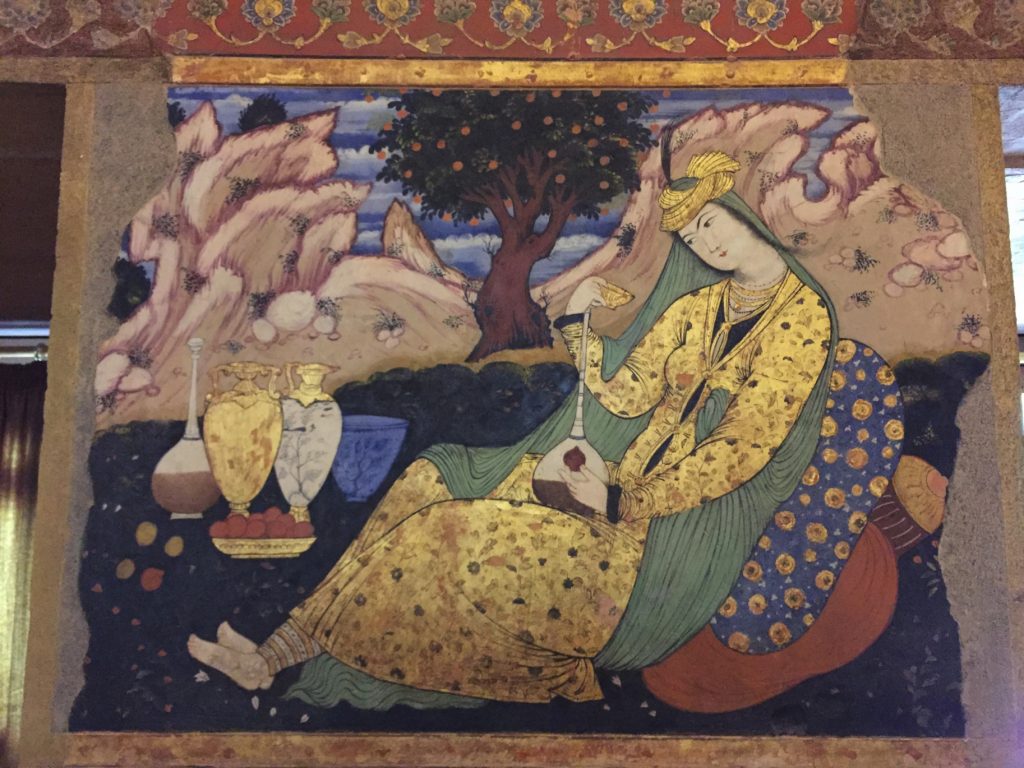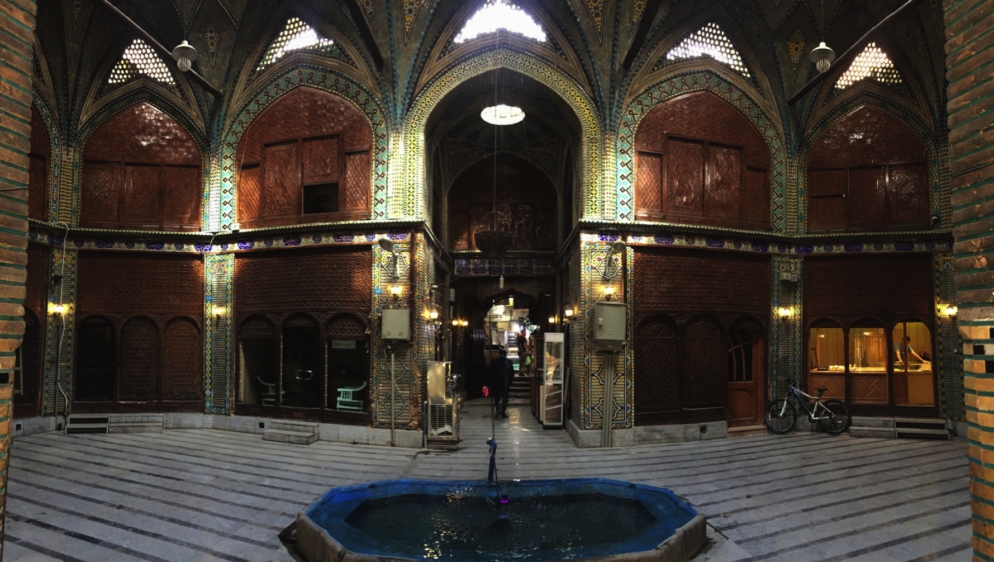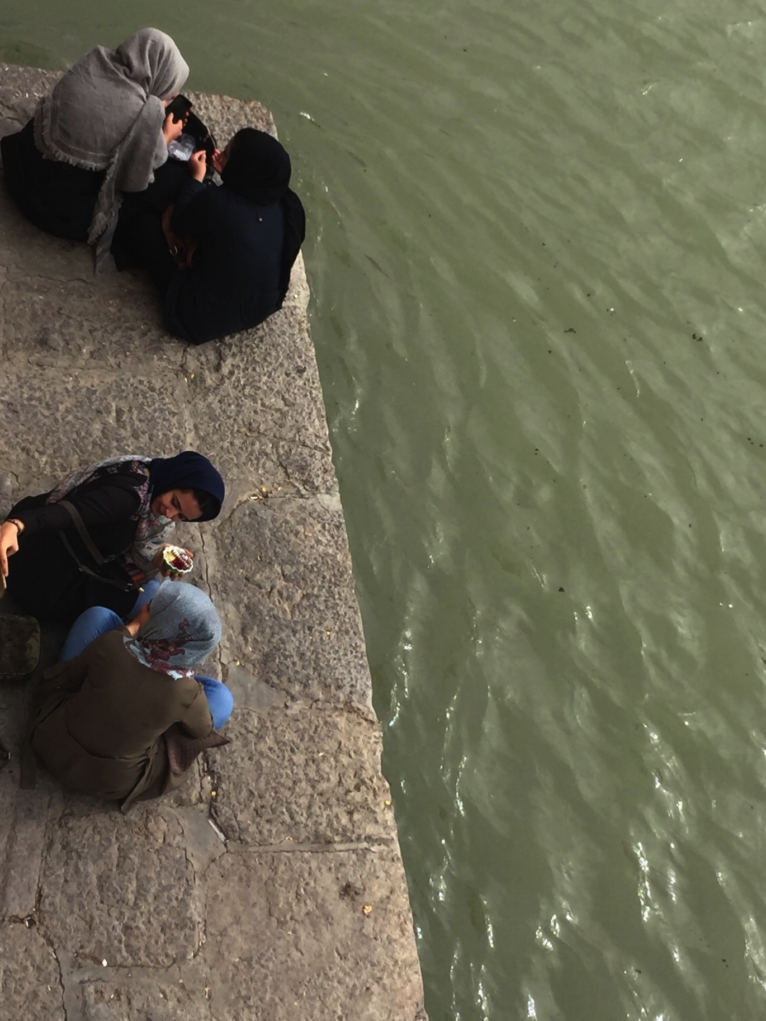Since Iran is such a large country, it’s difficult to decide on what to see this time and what postpone to another time. One of those things is a trip to the desert. And Iran has some VERY hot deserts, one of which, if you believe NASA Satellites, is even the hottest place on earth!
Since there wasn’t enough time to go to the “real” deserts this time, I had to settle for a smaller desert on the way to Isfahan near the town of Verzaneh. The village is a great base for day trips to the nearby sand dunes (beware the scorpions!) and to visit the salt lake region as well. It’s a very simple village, with an Ox-Mill, a Pigeon Tower for collecting pigeon feces to make manure and where the traditional women dress in white as opposed to black to reflect off some of the direct sun light.
Back in Isfahan, it’s a very different scene altogether. It’s an eclectic scene of modernism intertwined with tradition, religion with acceptance and freedom with oppression. Everyone had recommended to end the trip with Isfahan and now I understood why. Whether you’re getting lost in the Bazars during the day and joining the crowds to get some typical street food, chilling at the Imam square to take a break with fresh juice and ice cream, checking out some more Mosques and Palaces or spending the evening walking across the 3 bridges and stopping to hear people singing, you can’t help feeling the positively unique vibe of the city and it’s people. And if that wasn’t enough, then wandering around the Armenian neighborhood of Jolfa and visiting it’s churches will definitely win you over and you’ll start to fall in love with the city and to think about coming back to see it (and more of Iran) again.
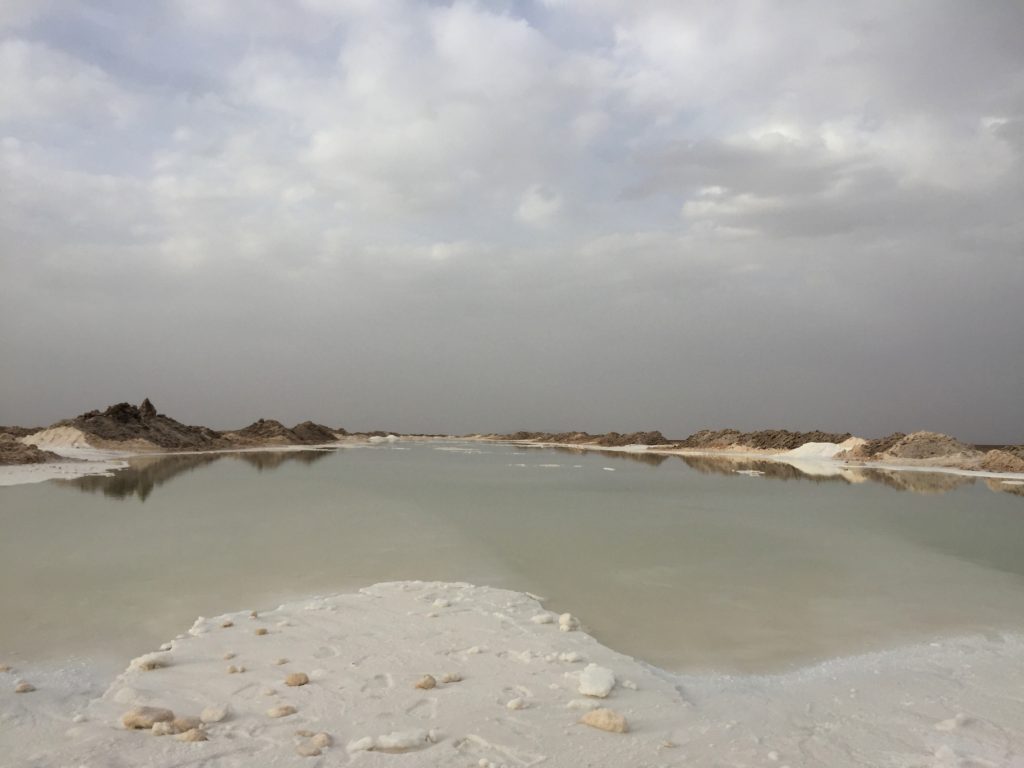
And here they are, the Salar de Verzaneh. The salt flats here were not so white like those in Bolivia.

Apparently, the darker color comes after it’s been raining. If it wouldn’t rain for a week or so, the salt desert would turn white again.
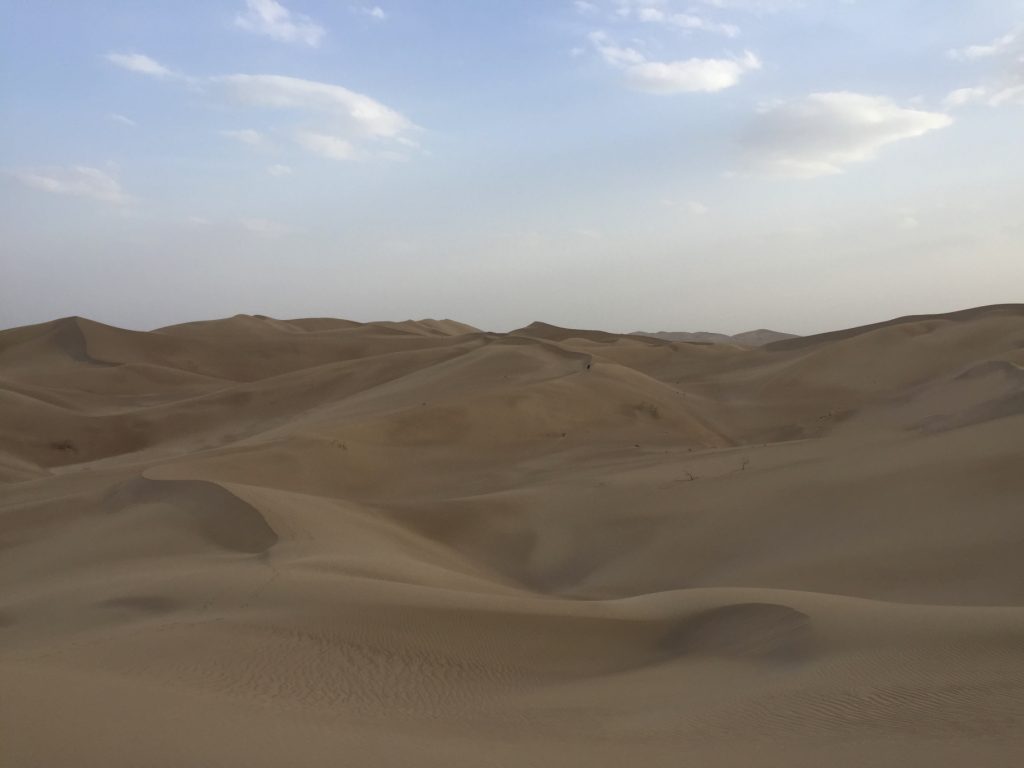
I asked about camping out in the desert here, but it seems that there are scorpions in some parts of these deserts. Not sure if it’s just a myth though, because they took the group to spend an hour or so in the sand dunes.

Another specialty of this desert town, is that the women here dont just wear black veils as is the case in most of Iran, but also white veils to help reflect the hot summer sun rays.

The area had a lot of these pigeon houses, which are used to house pigeons and collect their droppings to make fertilizer for the land.
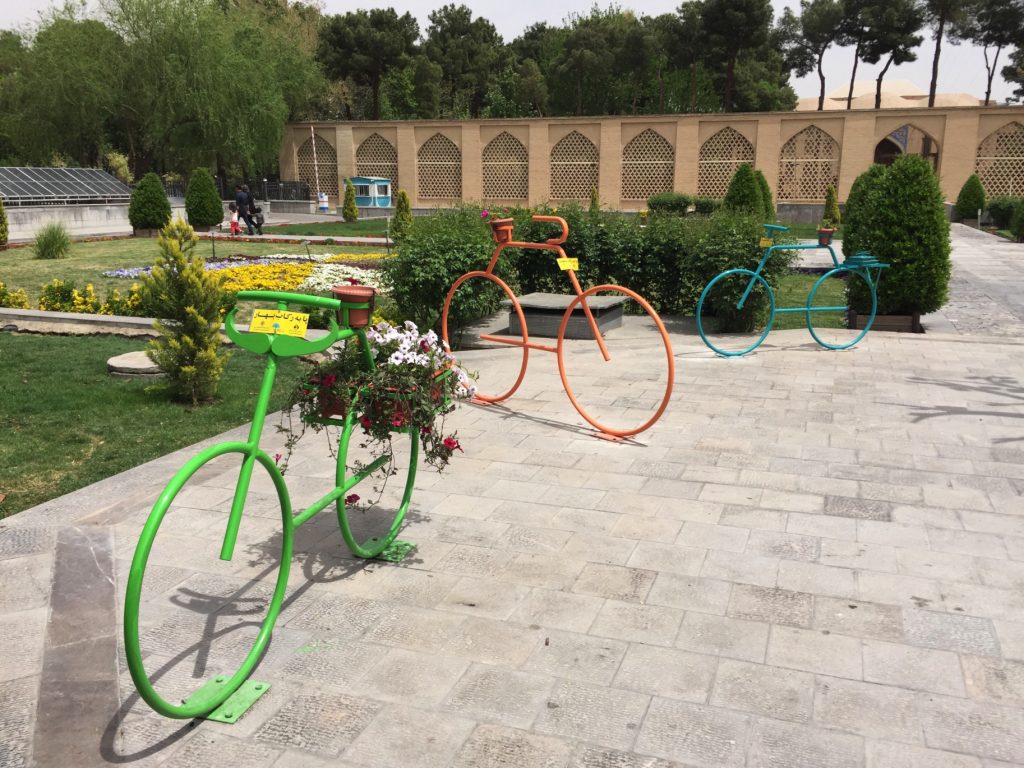
And hello to the final stop: Isfahan. They’ve been trying to push using the bicycle here for a while with these clever artistic installations all around the city, but it just hasn’t seemed to catch on.
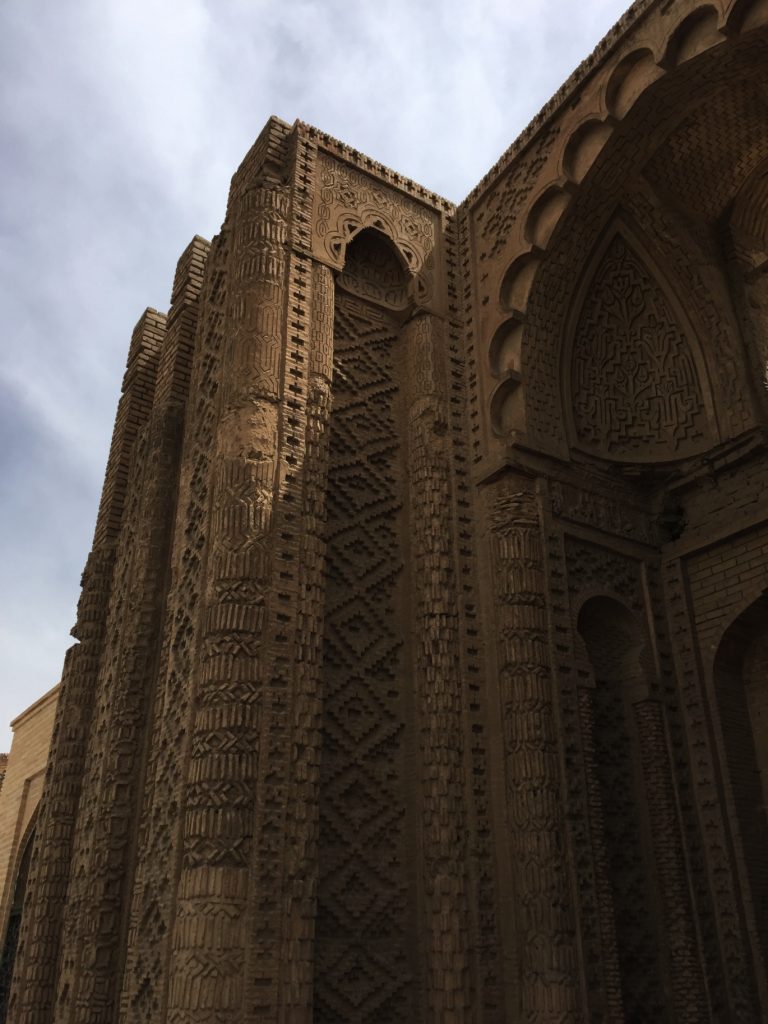
This was one of the oldest mosques in Isfahan and as you can see doesn’t have the typical turquoise decorations.

What I really liked is how much they liked to decorate their cities and make things look beautiful, like these public water fountains in the bazar.

In Iran, people place these stones on the ground in front of them, where their heads touch the ground when they pray.

People come here to have picnics, chill, play with friends or practice their language with tourists.

Besides the mosques, squares and bazars, Isfahan also has a palace with beautiful murals depicting life at that time.

These murals remind me a lot of the engravings at Persepolis or the hieroglyphic drawings in Egypt. It seems that all cultures had this in common. It was their form of capturing the moment and it makes you wonder if the internet (a la facebook) will be our medium to capture the moments?

And the best thing about the bazar here in Isfahan, are the little hidden peaceful spots you find in the middle of the chaos.

Isfahan is also famous for it’s bridges. There are 3 main bridges, all quite old and all full of life during the day but especially at night. People come to hang out at the bridges and sit on the banks for the river or in the cafes inside some of the bridges. It’s a very nice and joyful atmosphere to be there at night.

These guys are a typical spanish “Tuna”. Each university faculty has one or more “Tuna”s, which are traveling bands, who travel the country and the world to spread spanish music and culture. They traveled from Spain all the way to Iran, for only 6 days, to play and sing spanish folklore songs anywhere they can, visiting a new city everyday.


